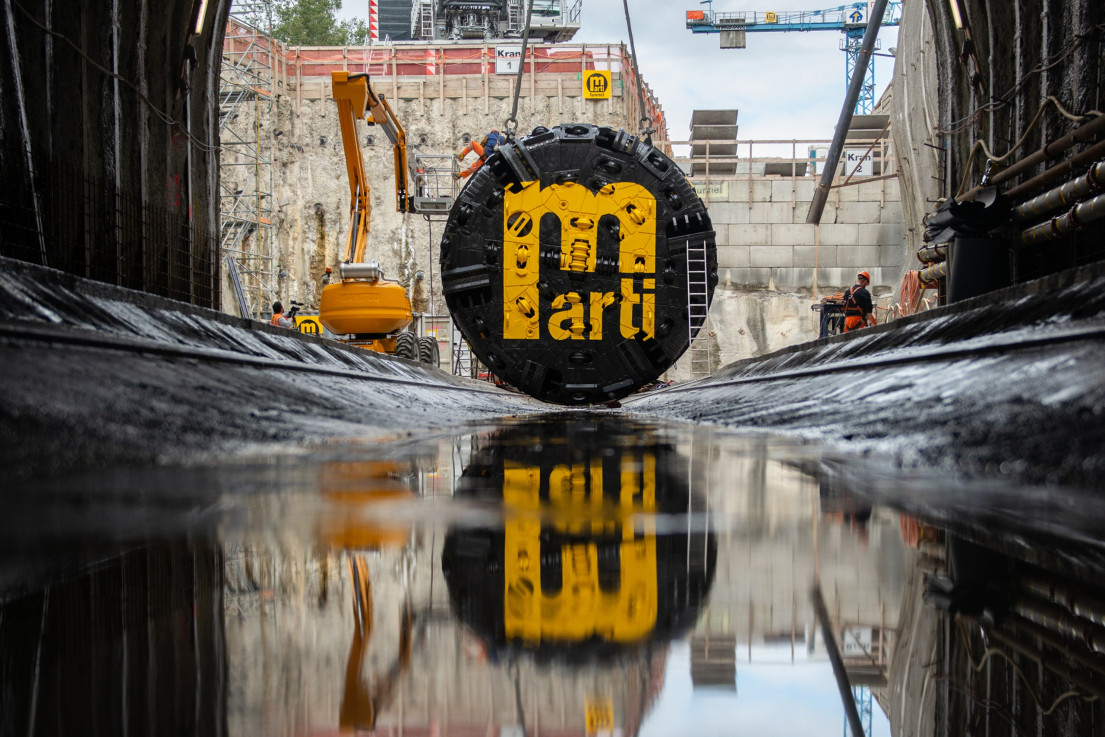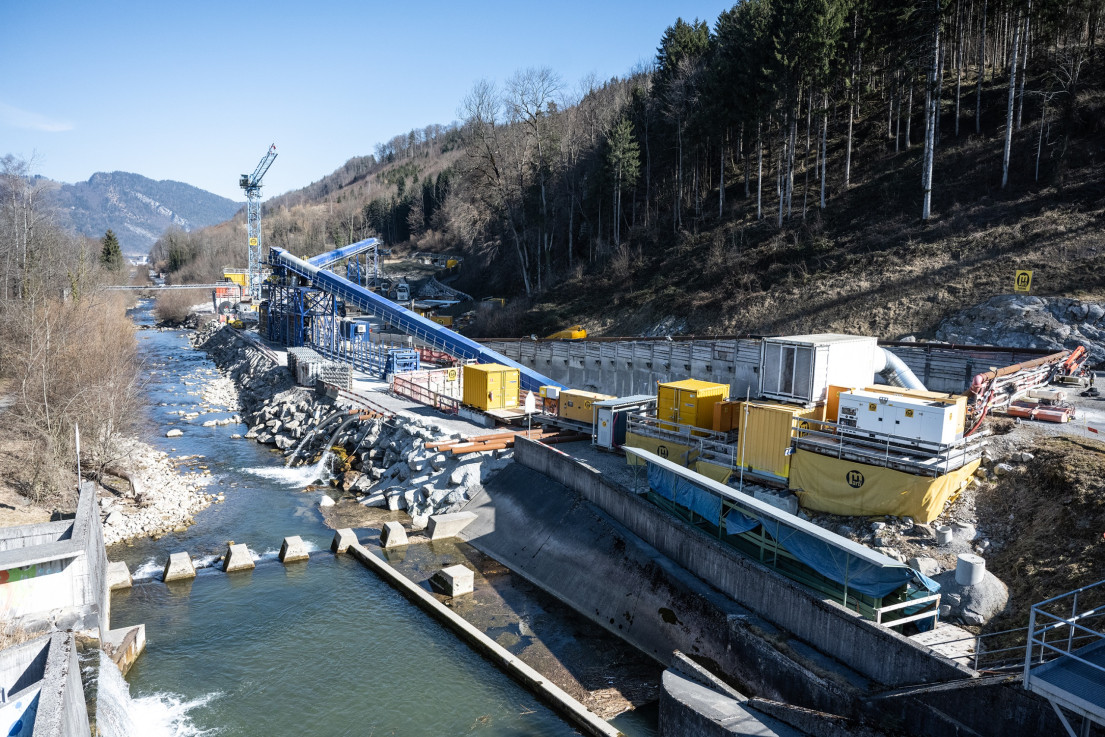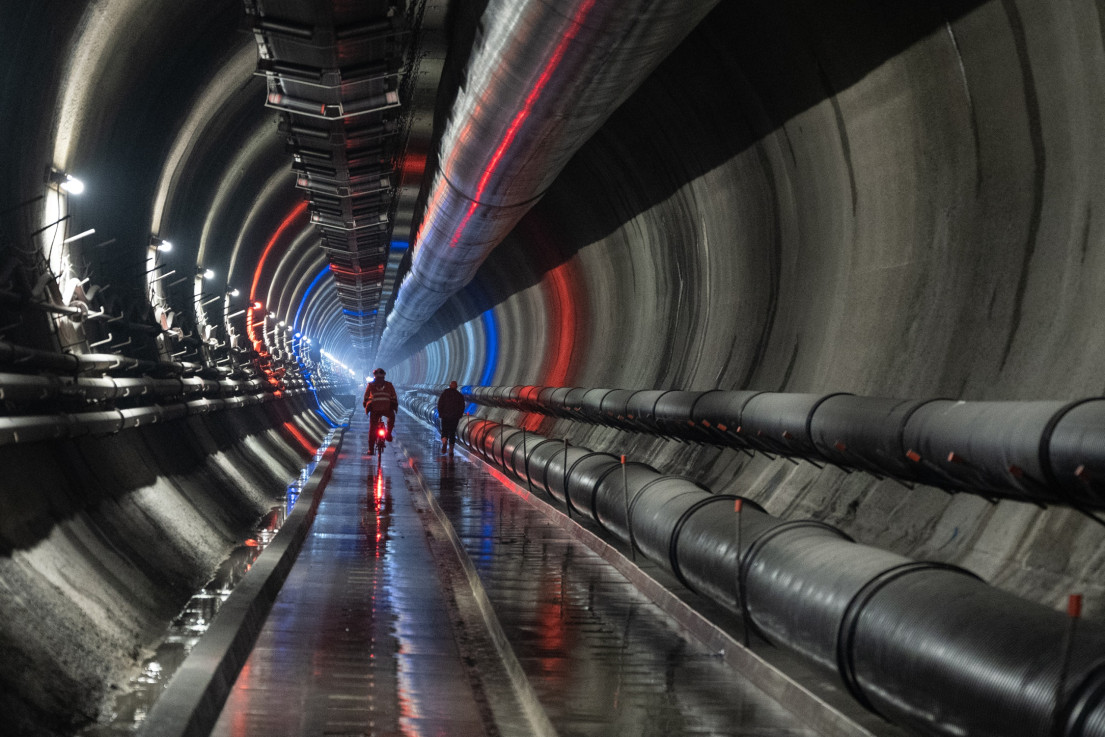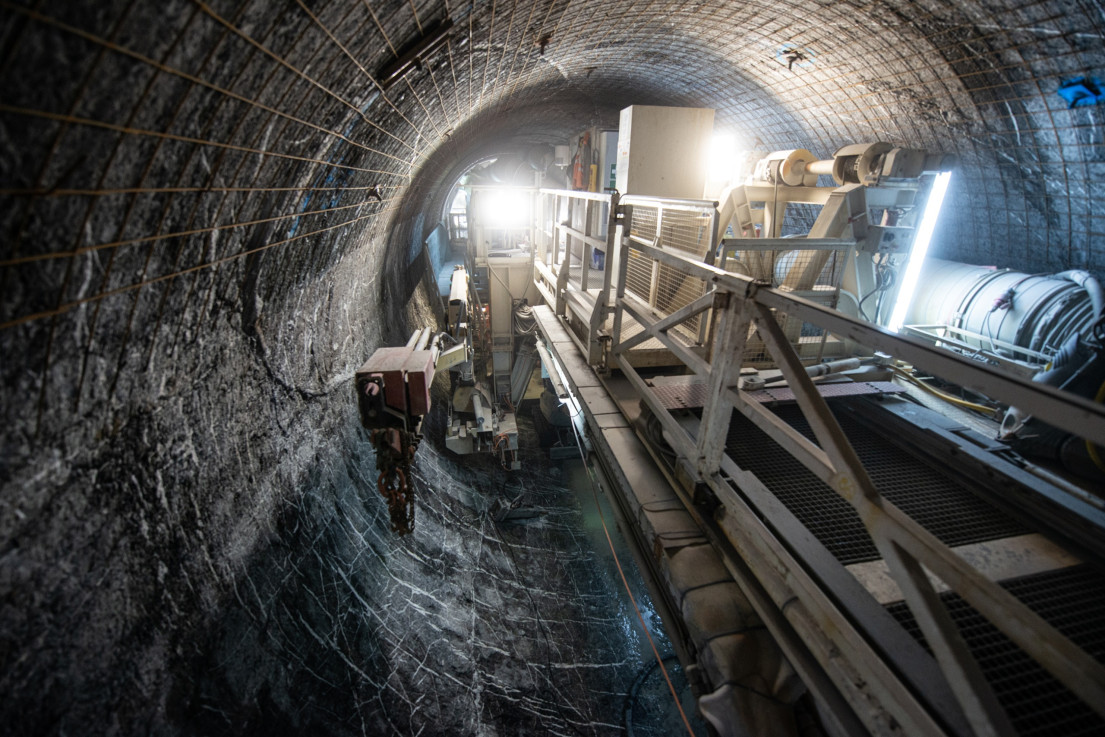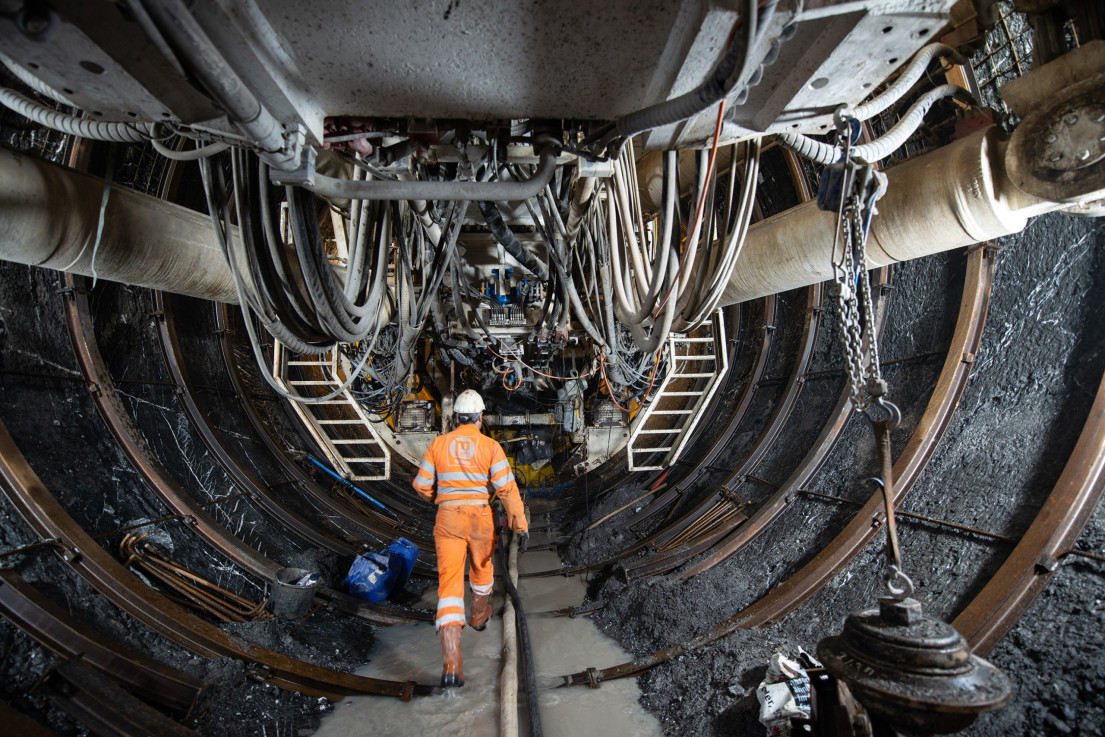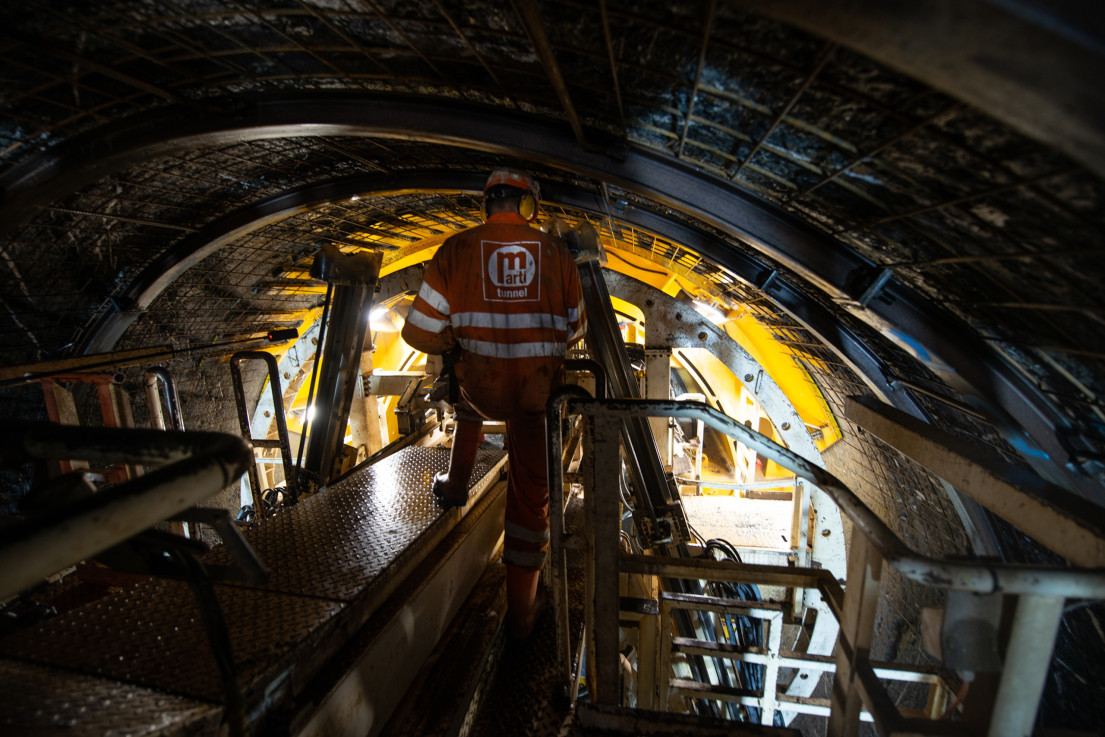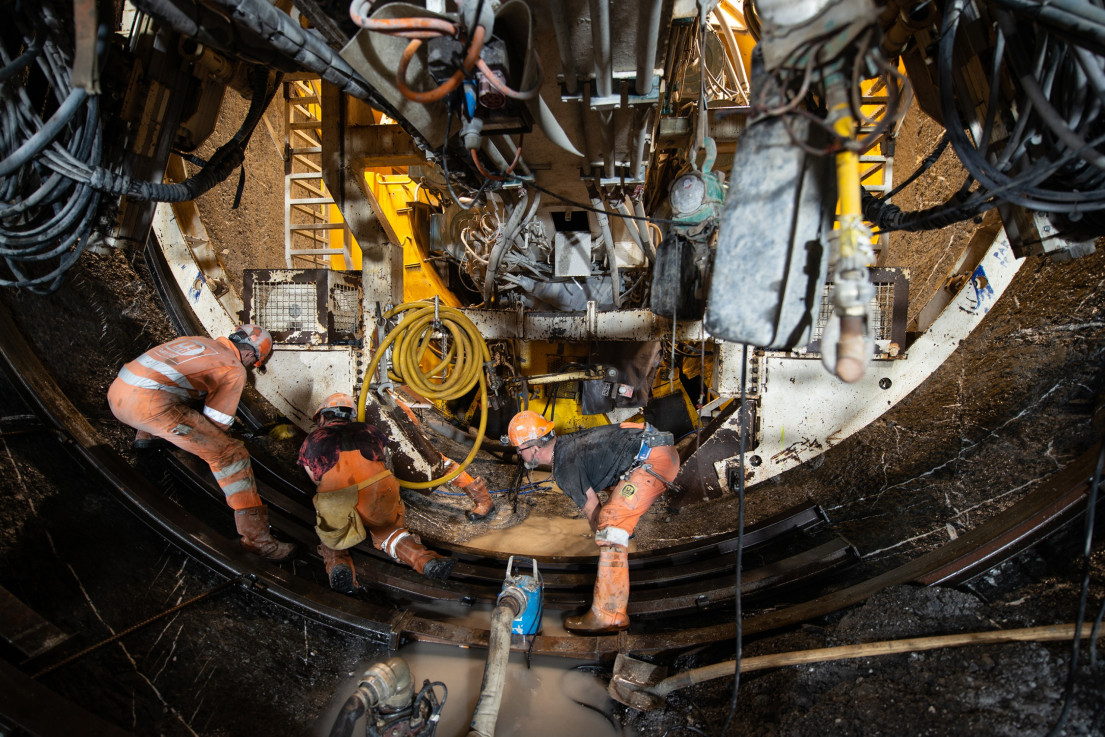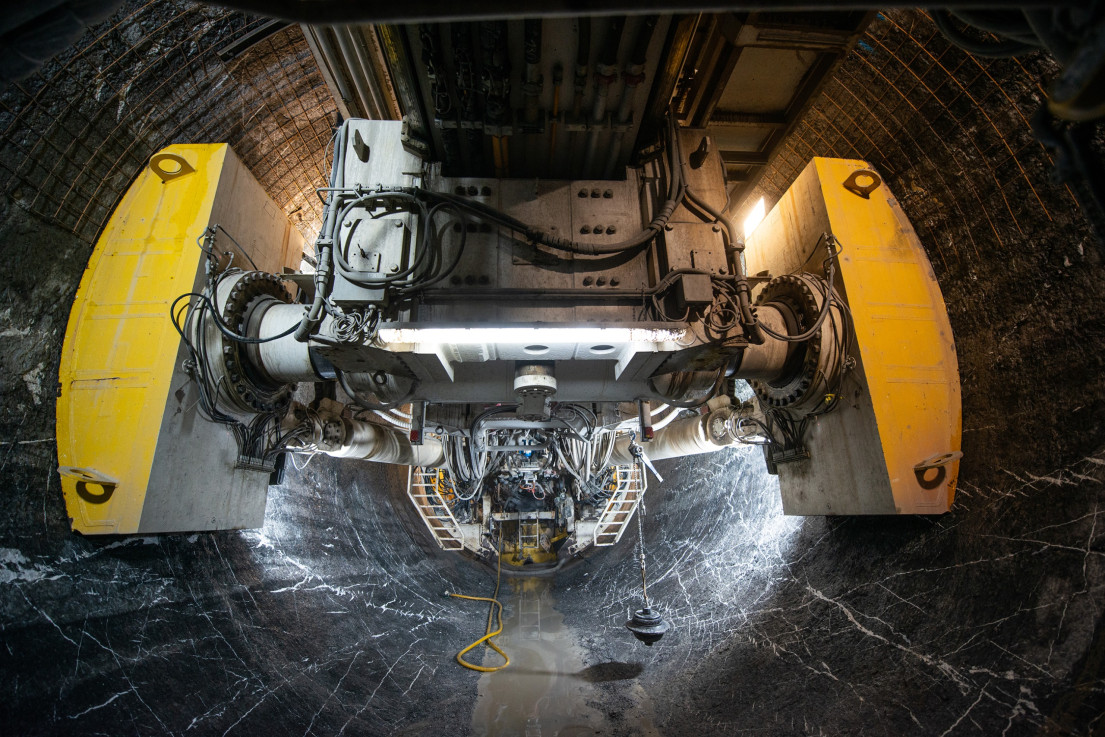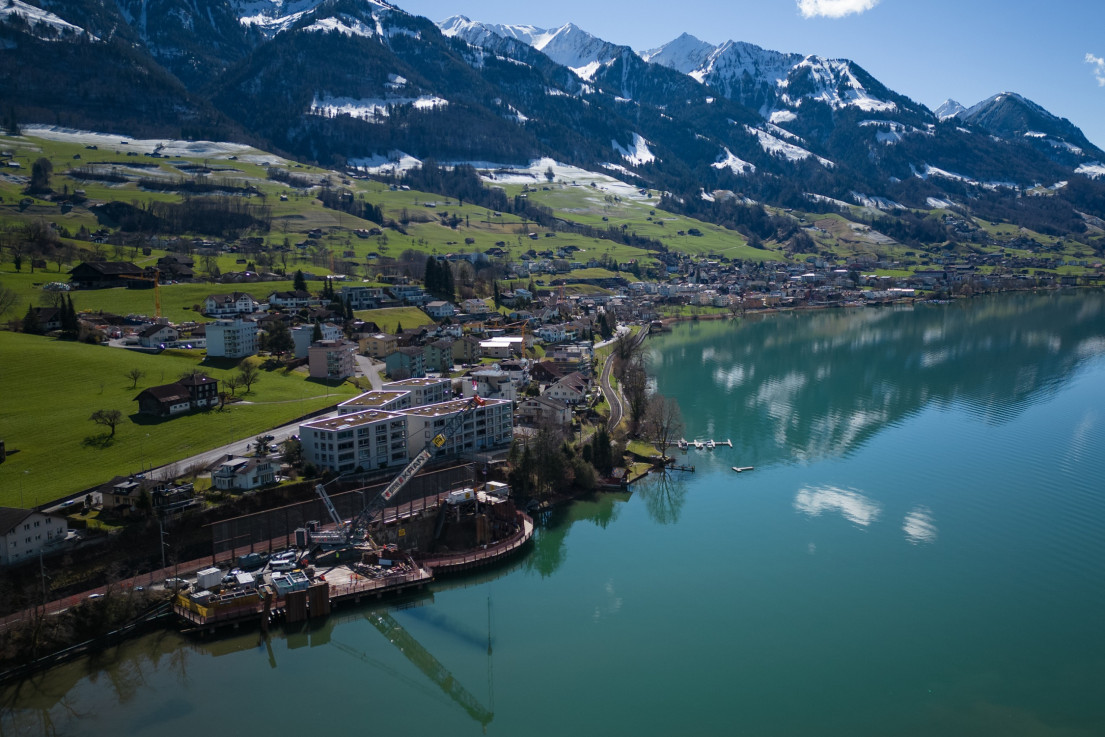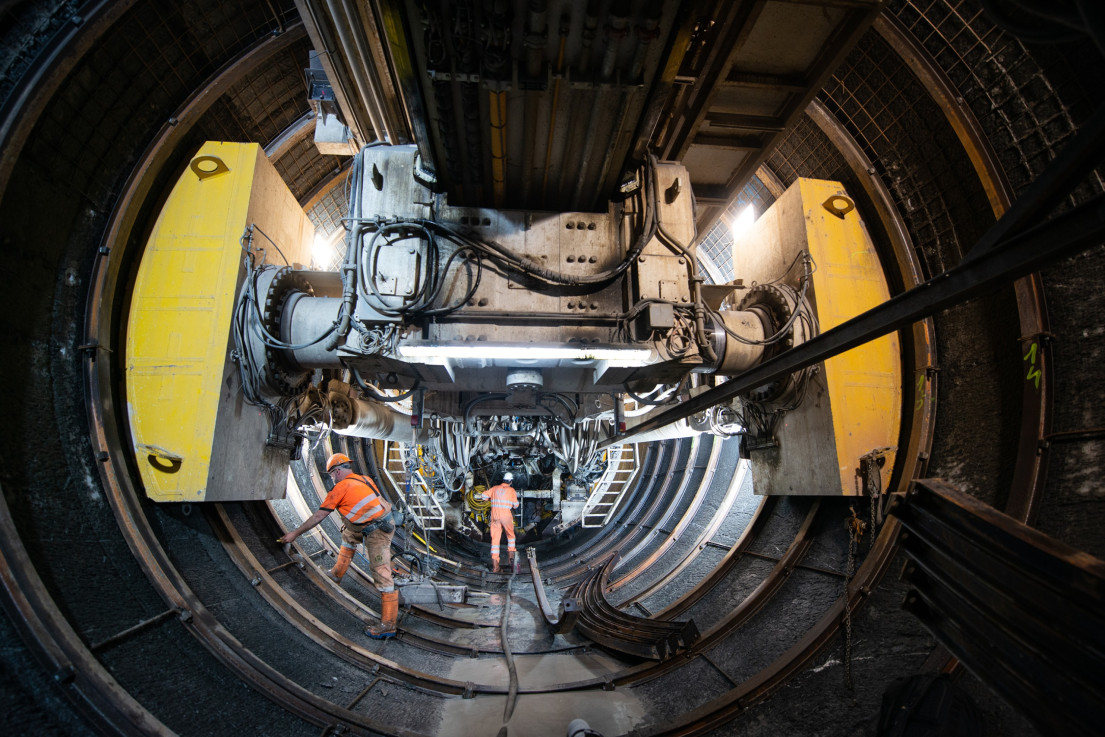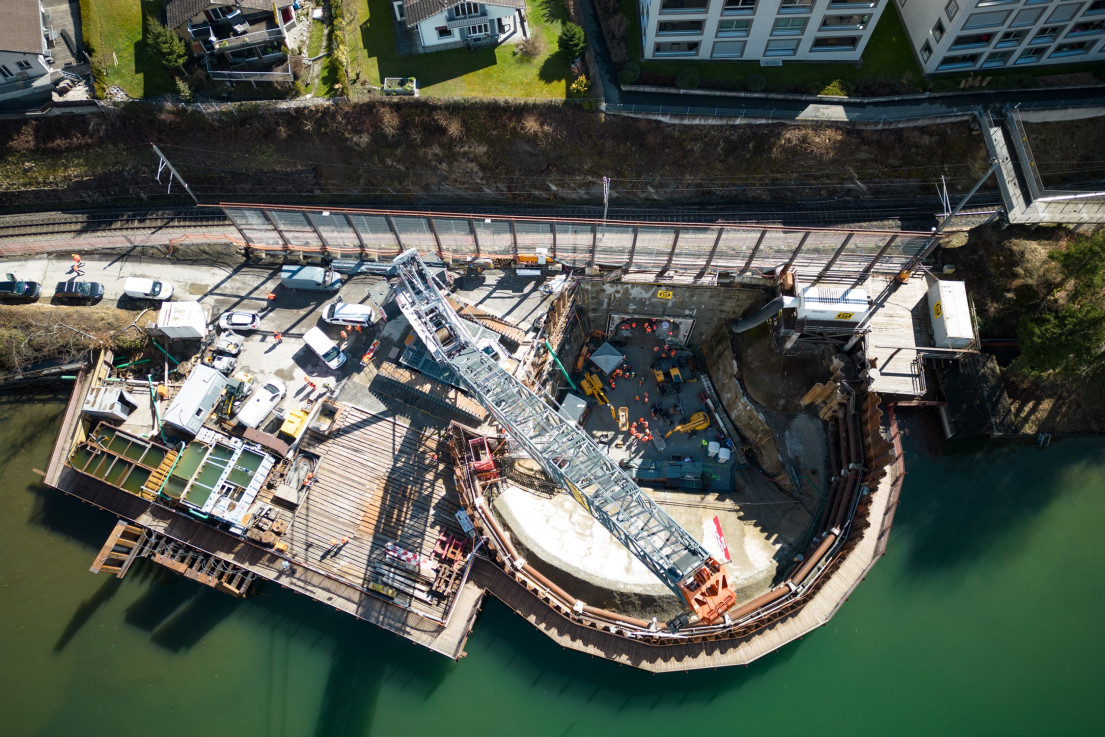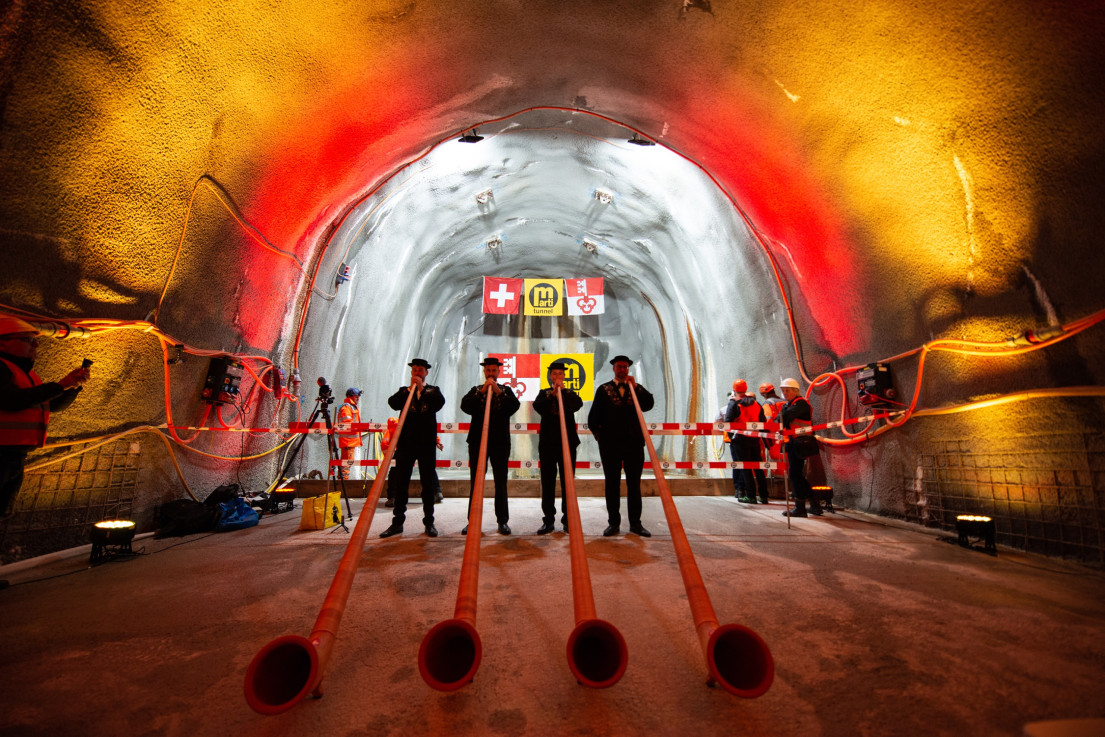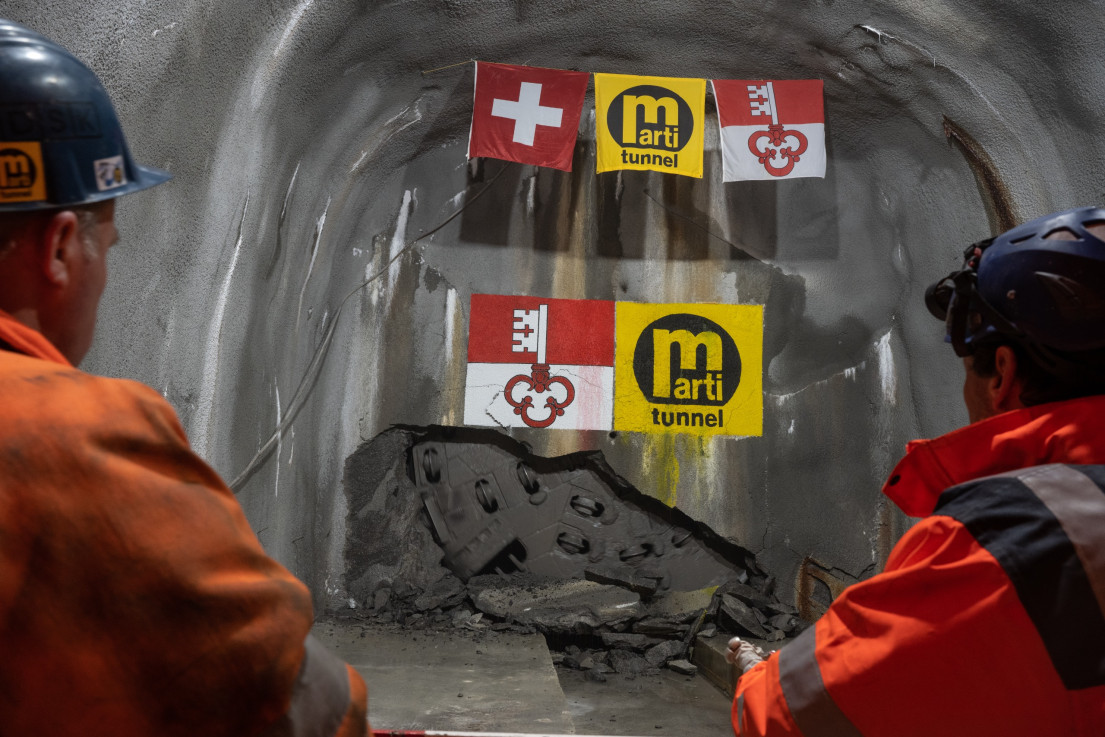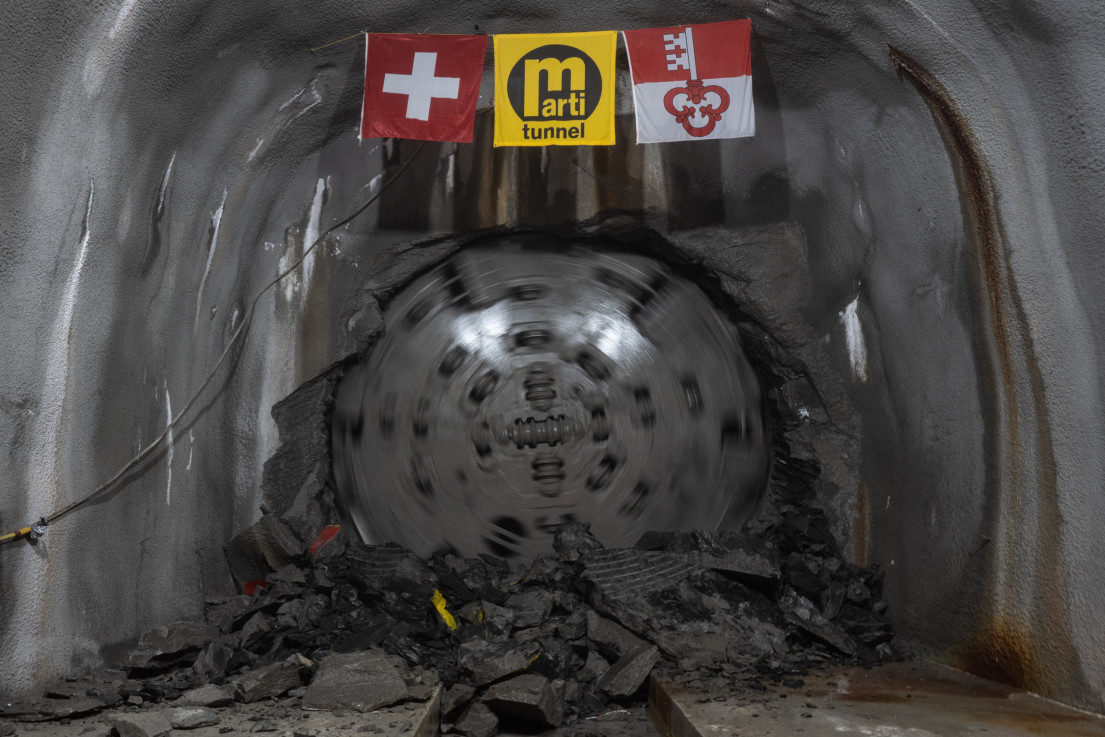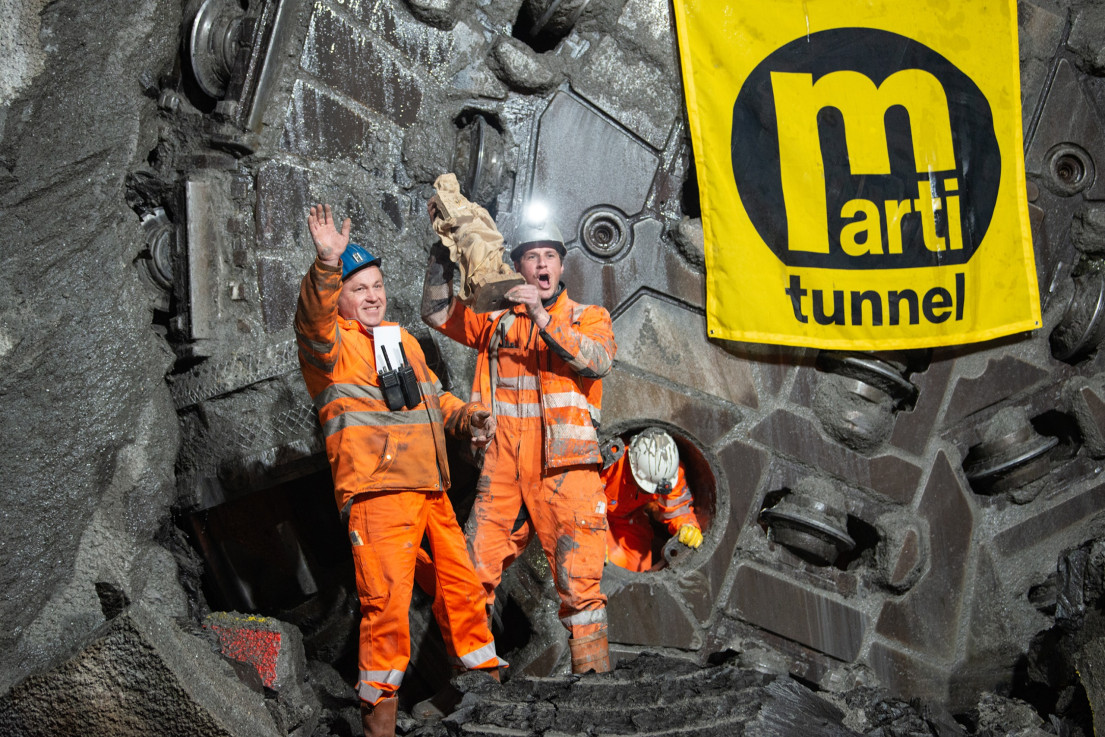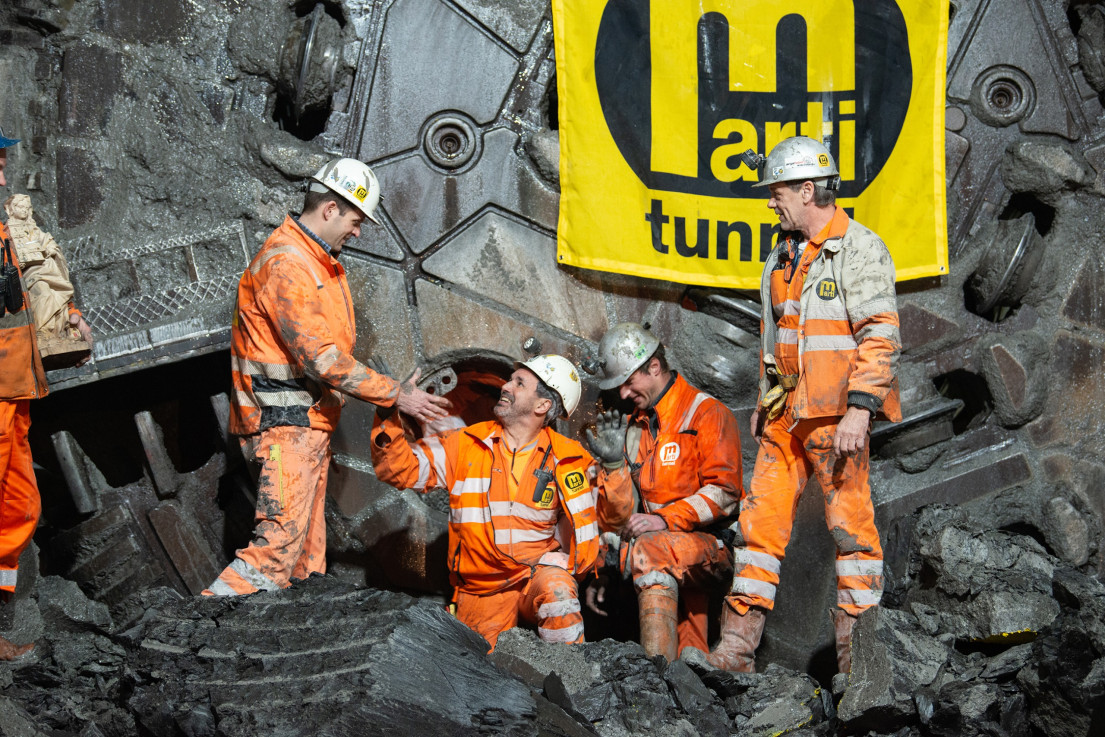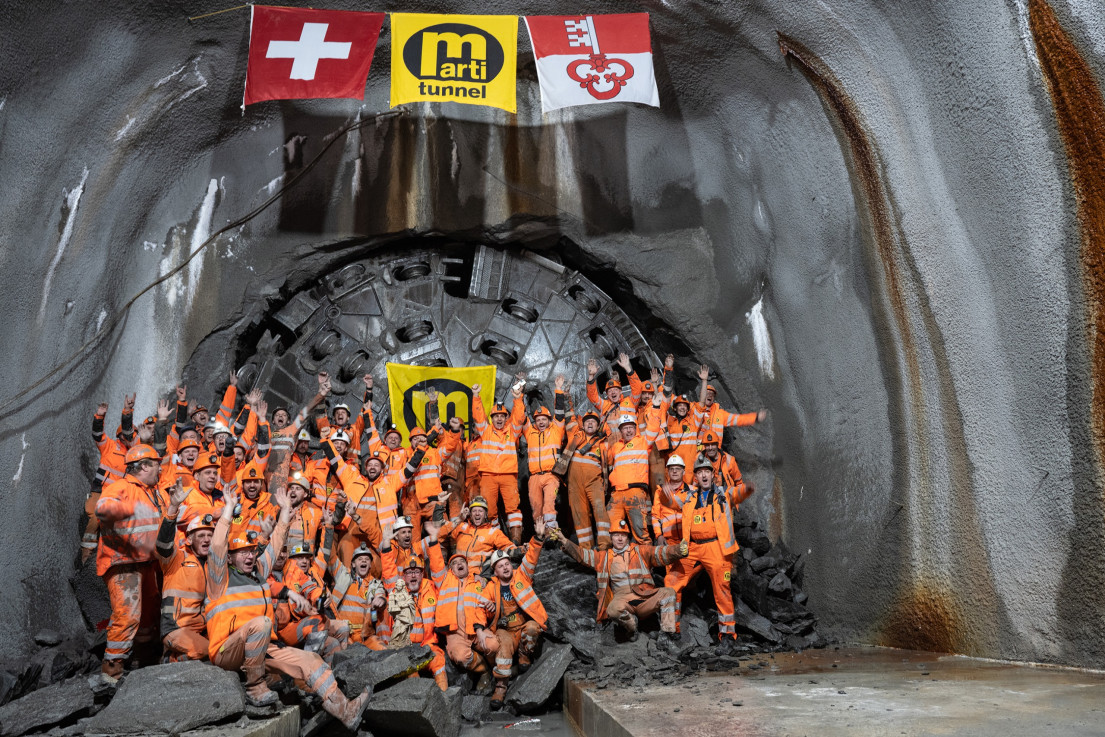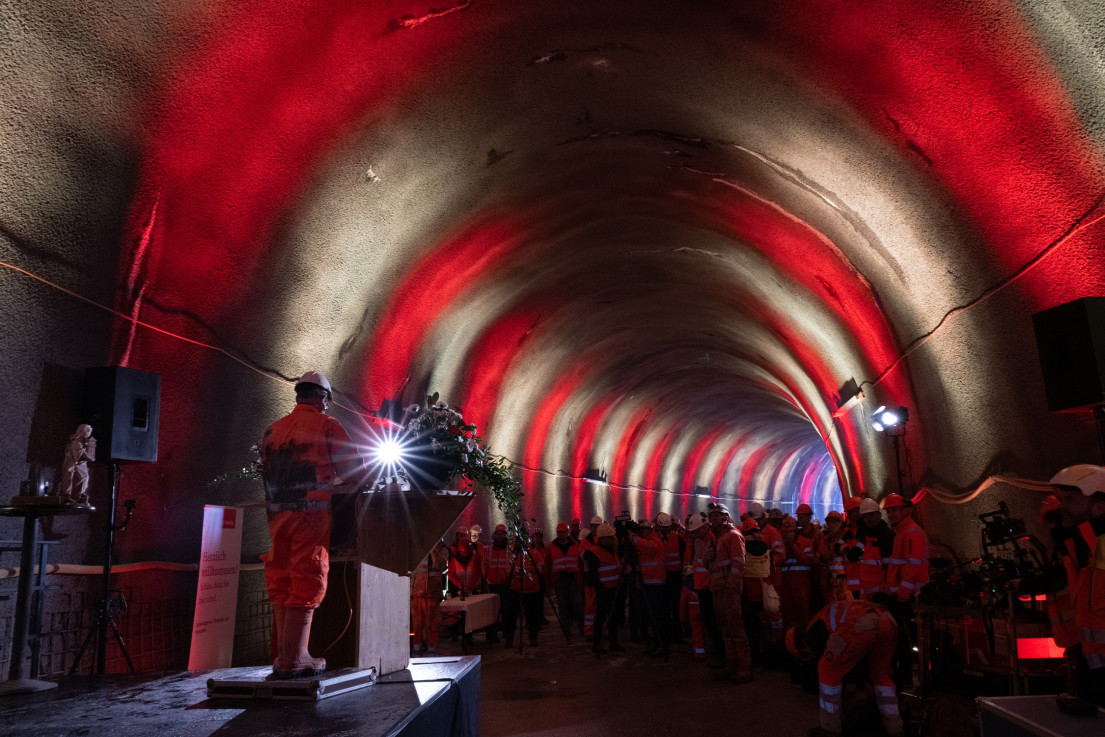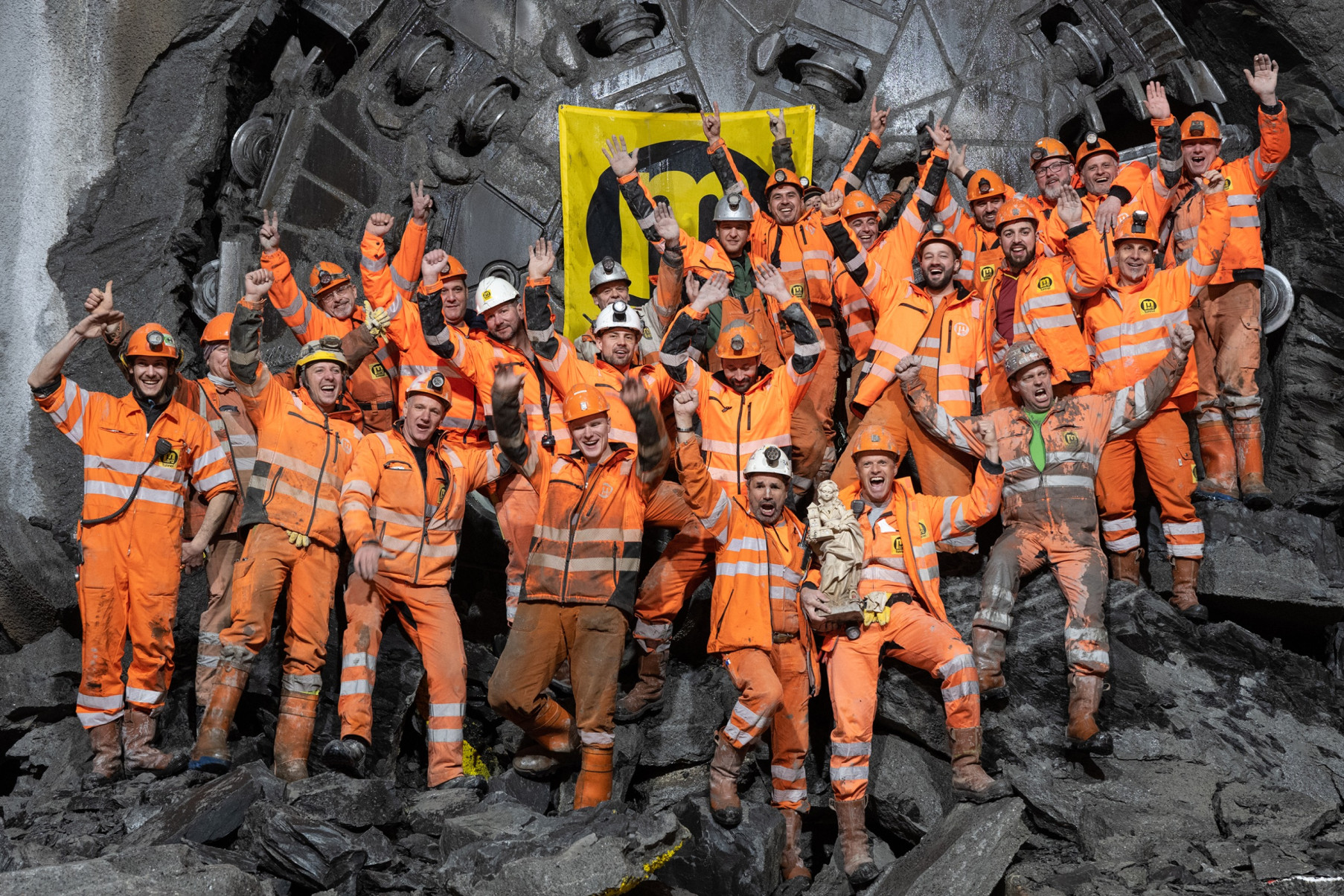
Breakthrough at Lake Sarnen
In the past, the Sarner Aa Valley in Obwalden has increasingly been the victim of severe weather events. Therefore, to protect against further flooding, the Marti Group is building a flood relief gallery on behalf of the canton of Obwalden. Now, with the breakthrough of the tunnel boring machine at Lake Sarnen, driving operations of the 6.5-km-long tunnel has been completed.
March 15, 2023, shortly after nine o’clock. The invited guests have gathered in the finish tube at the intake structure on Lake Sarnen. This 90-m-long gallery was excavated by blasting is located below the water level, but a sheet pile wall construction safely seals the structure. A few minutes later, the tunnel boring machine (TBM) starts rumbling. Only about one meter of rock separates the machine from the finish tube. Just under 20 minutes later, it is done – the machine breaks through the working face and the rotating drill head comes to a halt. Only a few moments later, the manhole in the drill head is opened and the first miner squeezes through the narrow opening. In his arms is the figure of St. Barbara, the patron saint of tunneling crew. To great cheers, he hands over the St. Barbara figure to his colleague waiting on the other side, as is tradition. One by one, the rest of the team follows, climbing with beaming faces through the manhole to the waiting crowd. Relief and pride spread. Because the team has done a great job with the tunnel boring machine in the last 27 months. And that is being duly celebrated today.
The Sarner Aa Flood Relief Gallery East
This new flood relief gallery runs from Lake Sarnen to Alpnach, where it ends below the Wichelsee lake. The gallery is about 6.5 km long and will significantly increase (about 100 m³/s) the discharge capacity of Lake Sarnen in the future, thus regulating the water flow through the Sarner Aa River. This is because the Sarner Aa Valley, located in the canton of Obwalden between Lake Sarner and the Alpnachersee lake, has been hit by severe weather events several times. During the great Alpine flood of 2005, for example, the Sarner Aa flooded large areas of land here, including the village of Sarnen.
Everyone can rely on each other here. Everyone wants to build this tunnel; everyone has the same goal. What a great team!
Challenging Driving Operations
After the construction of the launch pit in Alpnach, below the Wichelsee dam, Marti used blasting to build the launch tube of around 190 m. This was followed by the assembly of the tunnel boring machine (TBM) in autumn 2020 and in January 2021, the team started the TBM driving operations. The path towards Lake Sarnen held some unexpected challenges in store. Already on the first few meters, the Schrattenkalk turned out to be much harder over long distances than originally anticipated. Instead of the expected 90 to 120 megapascals (MPa), the TBM had to cope with up to 270 MPa. In addition, there were countless fracture zones, which caused severe damage, especially to the roller chisels on the drill head. From tunnel meters 1,359 to 2,012, the miners also encountered aquiferous karst systems. Constantly over 400 liters per second entered the tunnel. In case of heavy rainfall even up to more than 650 l/s. The incoming mountain water could be drained off via pump sumps in the clean water pipeline and reintroduced into the Sarner Aa at the Alpnach portal. The rest of the way, the miners continually struggled with the difficult geology and the consequentially inconsistent rock, which often had to be secured with reinforced nets, longer anchors and additional steel arches. This further delayed the TBM’s driving operation speed. “Our team is doing a really tough job here,” says Dominic Stadlin, construction site manager at ARGE HWS Marti. This makes the cooperation in the long-standing and well-rehearsed team all the more important. Thank for your commitment and good fortune for future projects!

